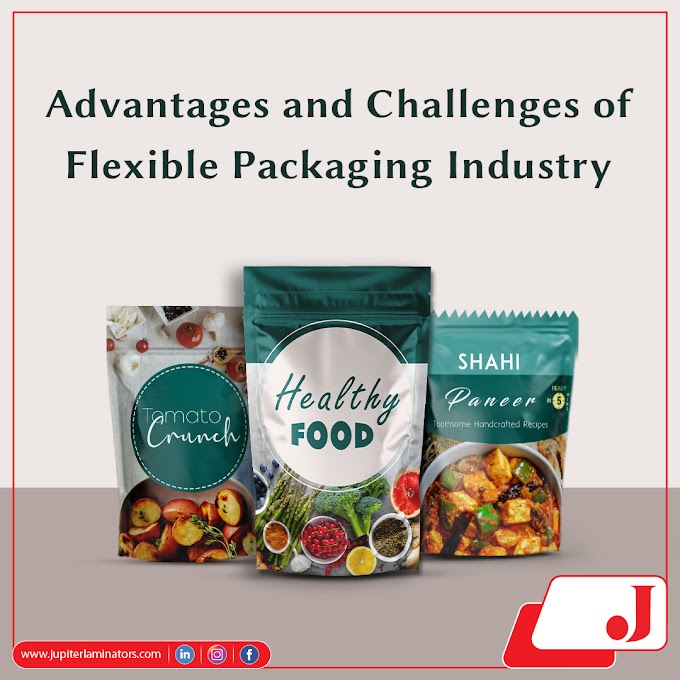In the previous few years, with
switching the atmosphere into greener and cleaner world, sustainable products became the
top most priority for customers. The staggering growth
of client awareness regarding sustainability, and frequent
dialogues on social responsibility has pushed brand owners to try and
do away with ancient packaging strategies and methods. The
world mood to scale back negative environmental effects of
packaging married with technological innovations have driven brands to
scale back the usage of material, use recyclable material in
packaging, and develop the usage of other sustainable materials.
Flexible packaging was born out of the imperative urge
to address environmental problems and cut
back waste, however at the same period of time carry
out the functions of ancient packaging. According
with the report “The future of Flexible Packaging to
2025”, flexible packaging sales were valued
at $219.5 billion, and were expected to achieve $282.6 billion
by 2025. The figures don't come back as a surprise as long
as nowadays flexible packaging
is wide most popular in client and electronic goods to
cosmetics and pharmaceutical industries.
Flexible packaging uses the
simplest characteristics of film, paper
& foil and permits its form to
be modified without delay. Flexible packages are generally bags,
pouches, liners, seals, sleeves, carded packaging and sample packets. However,
the packaging business is witnessing the
utilization of flexible packaging
in several innovative ways. Flexible packaging
solutions vary from single-use pouches, or
perhaps from zip locks to resealable closures. Here is why conscious
brand owners prefer flexible packaging:
1. Use of
fewer resources throughout production: Flexible packaging uses fewer materials within
the initial stage, and hence the waste generated is
also less. Even on the production cycle, the
utilization of resources like water, energy consumption,
green-house emission is less and in a smaller amount. Furthermore,
flexible package tends to be light-weight and hence the
energy used throughout transportation and also the overall
environmental pollution reduces drastically.
2. Zero
compromise on performance: Flexible packaging has rigorously tried addressing
the disadvantages of ancient packaging while
not compromising on the performance. Flexible packaging
maintains freshness, offers barrier protection and sturdiness, nice printability
and is convenient to use. Better of all,
it is used for merchandising myriads of
applications starting from food products to even children’s toys.
3.
Reduction in overall production cost: Use of fewer
resources mechanically cuts down production prices. Cost saves are seen
across the production spectrum from material to transport.
Furthermore, flexible packaging may be created on
the spot from roll materials, and so further value to
transport readymade boxes doesn't exist.
4. High on
shelf charm and appeal: Shelf charm of the packaging
is improbably vital and has become a
key element for no-hit promoting. Despite, how nice the
packaging type is, if it doesn’t appeal the customers, it'll fail. Flexible packaging is high on
aesthetic price and also offers visibility of contents, which permits brand
owners and product designers to think ad design out-of-the-box.
Despite the various blessings
and advantages flexible packaging boasts of,
there are a number of challenges further. Many a times,
recycled plastic is taken into account as staple for flexible packaging. Whereas the
thought itself is astounding, recycled plastic will carry
odors which will eventually have an effect on the goods.
Hence, a lot of research and development
is needed within the field of flexible packaging to
create it even more sustainable.
Another massive challenge within the use of flexible packaging is that the education
of customers. Though it's true that customers are progressively exacting much
more sustainability packaging
solutions, it's arduous to inform whether or
not customers will really differentiate sustainability packaging
from non-sustainable. Once the products are on the shelf, it’s
ultimately the visual and shelf charm and not the
environmental edges that make the goods and products sell.
Hence, tons of work has to be done to
extend client awareness.
There is no doubt that flexible packaging is that the most
sought-after packaging kind for brands currently. They're sturdy, supply nice printability
and aesthetics, and especially use less resources and cut
back prices throughout production. Flexible packaging
not solely facilitate brands build their stand
clear relating to sustainability, however it conjointly educates customers to utilise and
recycle where possible – and this is often an
enormous step towards a more sustainable life-style.




0 Comments